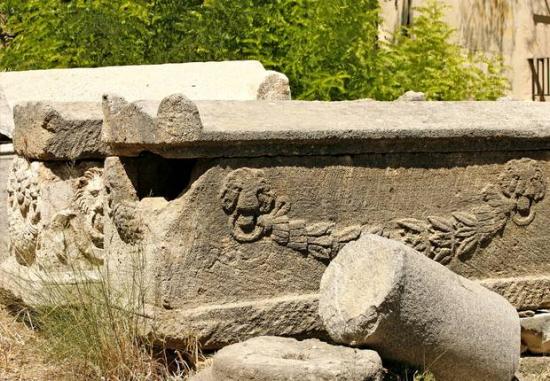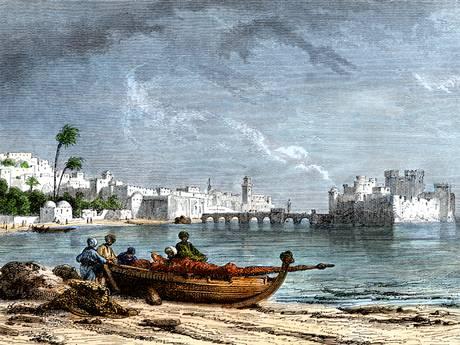PART.2
The Sidon site has produced treasures to match this. There are cylindrical pots from the early 5th century BC showing warriors rising prancing horses and holding spears, deity figurines from the early Bronze Age – a mixture of naïve and surreal if we were to apply today’s artistic taste – and there are axe heads from graves, and one mud-bricked sepulchre from the middle Bronze Age whose occupant had to be squashed into it, the skeleton’s knees almost forced into its stomach cavity.
Enas Saleh describes how the children from modern Sidon look at the pictures of these bones. “Mostly, they want to know the names of these people,” she laughs. But of course, the children are right to ask this question. Even the ancient dead deserve their human identity and even I, inured to the modern and blasted corpses I have seen in Sidon’s present-day mortuaries, wonder if these long dead folk really deserve to be boxed up and carted off to Bradford University. As for the identities, alas, you had to be rich or priestly or kingly to have your name recorded 3,000 years ago.
There is, for example, an early Iron Age Phoenician plate discovered on site, recording that Abdyahu was a priest responsible for several altars. They’ve even discovered a percussion instrument, a “sistrus” used for religious dances to worship the Egyptian goddess Hathor. A set of earphones at the exhibition helpfully gives visitors the sound of its music, the tinkling, it seems, of tiny bits of metal. And intriguingly, the instrument owes its name to the rustling of a cow passing through a thicket of papyrus reeds.

Relics found at the site in the five thousand-years-old city of Sidon (Getty)
The archaeologists have found gold pendants, earrings, silver bracelets and, perhaps most enthralling, a tiny cylindrical seal depicting an apparently Mesopotamian worshipper with a gift, a seated goddess and a bearded hero wearing the headdress of a bull-man, with water pumping out of his left elbow. The hole through the cylinder must have been drilled, but its makers surely needed glass or primitive spectacles to indent this extraordinary detail onto a soapstone seal scarcely an inch in length.
Animal remains prove that ancient Sidonians hunted and ate hippopotamus, bears, boars and deer. They were fixated, like so many peoples of antiquity, with gods, masculinity, sex and death – their present-day descendants might be guilty of just such obsessions – although life can be easier now. For a fine falafel sandwich, you have only to walk half a mile down to Palestinian Abu Sami’s shop opposite the Castle of the Sea. But there are some eerie parallels. Just opposite the excavation site is one of Sidon’s contemporary cemeteries. The grandfather and grandmother of a friend of mine are buried there and here too are buried five murdered men (I spent six weeks investigating their deaths), beaten to death by Israeli guards at a makeshift prison camp in a Sidon fruit factory in 1982.

Sidon was a chief seaport of ancient Phoenicia (Alamy)
And the tide of peoples who have washed through this old city continues. Most of the inhabitants living around the dig where Matt Williams and his colleagues work are Palestinian refugees, Iraqi refugees and now, thousands of refugees from the bloodbath in Syria. For despite their beautiful artefacts, the grace of their art and their ancient scripts, the one thread that binds the peoples of antiquity to the humans who live here now, is war.